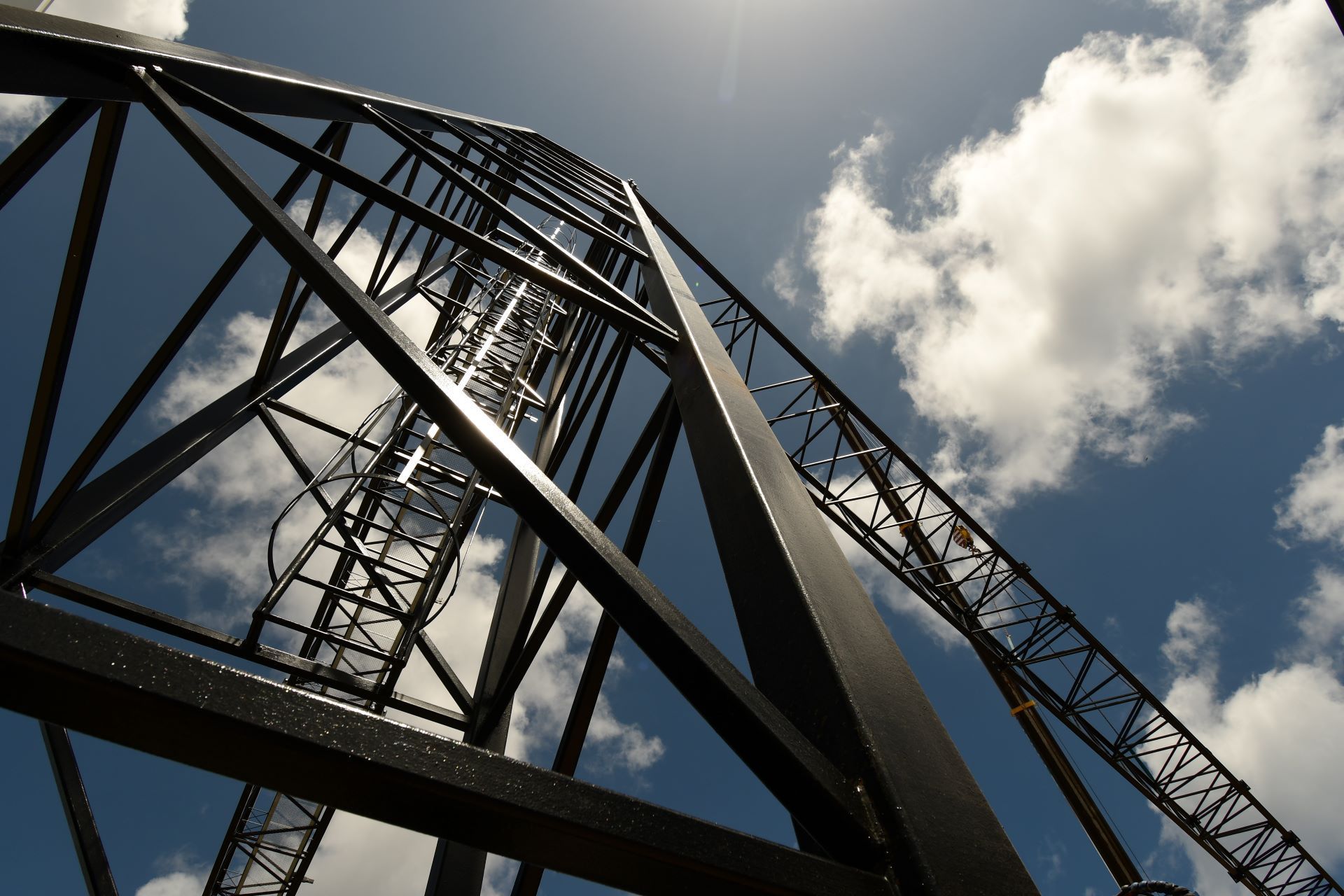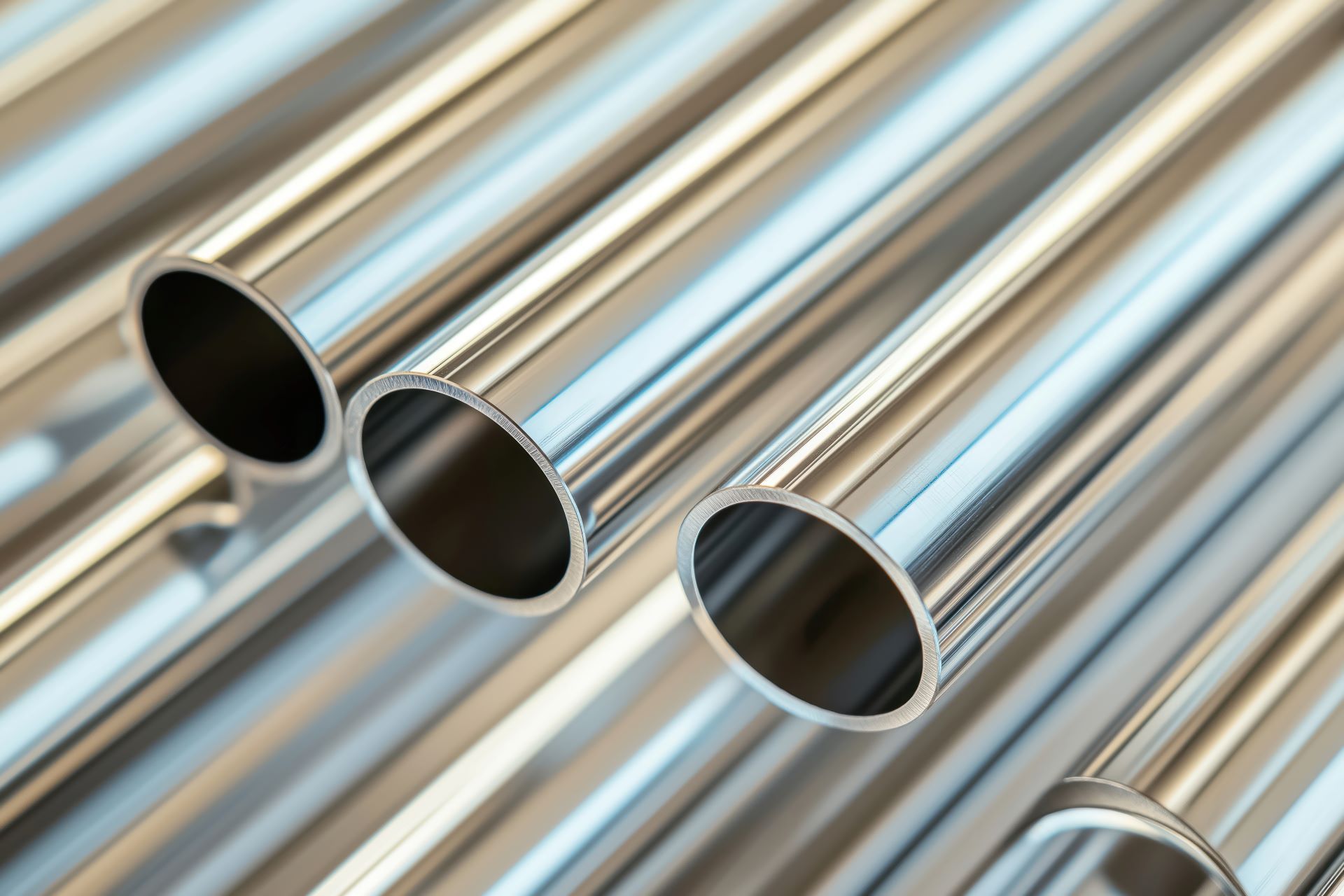Preventing Galling in Stainless: Fasteners, Threads, and Clamp Joints
Stainless steel is renowned for its strength, corrosion resistance, and long service life but in high-friction environments like fasteners, threaded components, and clamp joints, stainless comes with a known challenge: galling.
Galling is a form of adhesive wear that occurs when two stainless components rub under pressure, generating friction and causing the material surfaces to seize or fuse together. This problem is common in bolts, nuts, flanges, and sanitary clamp systems, especially when stainless steel is used against itself.
At Action Stainless, we supply stainless materials specifically processed and handled to minimize galling risks during fabrication and installation. Our approach includes appropriate material pairing, surface finish considerations, and access to in-stock components suitable for anti-galling best practices.
What Is Galling in Stainless Steel?
Galling happens when metal surfaces slide against each other under pressure like during the tightening of a bolt or clamp. The protective oxide layer that makes stainless steel corrosion-resistant is relatively soft and thin. When disrupted by friction, the exposed metal cold-welds to the mating surface, creating rapid heat and wear.
Once this starts, it escalates quickly. Threads lock up, bolts seize, and torque builds to the point of shearing, binding, or failure. Disassembly becomes impossible without cutting or damaging the components.
Galling most often occurs:
- Between identical stainless grades, such as 304 bolts and 304 nuts
- When fasteners are over-tightened or installed quickly
- In vibration-prone or high-load systems
- On unlubricated or rough surface finishes
- When components are reused without cleaning or inspection
Why Galling Matters in Stainless Steel Projects
Galling is more than an inconvenience, it leads to:
- Lost time during assembly or disassembly
- Damaged parts that require replacement
- Safety hazards in pressurized systems
- Contamination risks in sanitary process lines
- Increased maintenance costs in field equipment
In industries like food processing, chemical manufacturing, marine, or energy, preventing galling is not optional, it’s part of standard installation protocols.
Action Stainless supports fabricators and maintenance teams by delivering stainless bar, pipe, tube, and plate that’s suitable for
high-contact, threaded, or jointed applications, while offering guidance on
material selection, finish, and anti-seize usage.
Understanding Which Applications Are Most At Risk
Certain stainless components and assemblies are particularly prone to galling:
- Bolted flanges and structural fasteners in tank fabrication
- Sanitary clamps and tri-clamp fittings in food or pharma lines
- Threaded inserts, studs, and bolts in pipe supports
- Compression fittings and unions in process lines
- Load-bearing hinge or latch systems
Most of these involve stainless-on-stainless contact, especially when assembled without lubrication, at high speed, or under heavy torque.
At Action Stainless, we help customers spec the correct grades and finishes to match their torque and sealing requirements, reducing the risk of galling in critical assemblies.
Stainless Grades and Galling Behavior
Different stainless grades have different tendencies to gall. Here’s a quick comparison:
| Grade | Galling Tendency | Notes |
|---|---|---|
| 304 / 304L | High | Most common; soft surface leads to high friction under torque |
| 316 / 316L | Moderate to High | Better corrosion resistance, similar galling risk as 304 |
| 303 | Low | Sulfur addition improves machinability and reduces galling |
| 416 | Low | Free-machining; not used where corrosion is critical |
| 17-4 PH | Moderate | Hardened structure can reduce galling under proper conditions |
| 2205 Duplex | Lower than 300 Series | Dual-phase structure resists wear and seizing |
Free-machining grades like 303 or 416 are less likely to gall but may not offer the corrosion resistance needed in demanding environments. In contrast, 304 and 316 are more susceptible but are often required for sanitary or chemical applications.
The key is to pair stainless components properly, control the finish, and apply anti-seize compounds or coatings where necessary.
Proven Techniques to Prevent Galling
Preventing galling isn’t a mystery, it comes down to proactive material handling and assembly technique. Here’s what Action Stainless recommends:
1. Use Dissimilar Grades When Possible
Avoid stainless-on-stainless contact when you can. For example, use a 304 nut with a 316 bolt to break up the friction bond. This change in composition helps interrupt adhesion during tightening.
2. Apply Proper Anti-Seize Lubricants
Using anti-seize compounds made for stainless steel (often containing nickel or copper) significantly reduces galling. These lubricants act as a barrier between surfaces and minimize friction heat buildup.
For sanitary applications, always use food-grade anti-seize lubricants that meet 3-A or NSF standards.
3. Slow Down Installation Speed
Power tools or high-speed assembly can generate the friction and heat needed to trigger galling. Whenever possible, torque fasteners slowly and smoothly especially as you approach the final load.
4. Inspect and Clean Threads
Dirty, damaged, or reused threads are more likely to bind. All threaded components should be clean, burr-free, and lightly lubricated before reuse. Even minor scoring can promote adhesion under torque.
5. Use Proper Surface Finishes
Rough finishes can trigger galling. Polished or passivated surfaces reduce friction and promote better mating. Action Stainless offers polishing services for components destined for high-friction environments.
Action Stainless: Material Preparation to Prevent Galling
At Action Stainless, we do more than just supply bar, sheet, and pipe, we prepare materials for real-world applications, including those prone to galling. Our in-house services support galling prevention by:
- Polishing round bar and tubing for clean, burr-free threads
- Saw-cutting bar and pipe to exact lengths without deformation
- Supplying grades like 303 or 17-4 PH for threaded components
- Shearing and deburring sheet or plate for clamp and gasket surfaces
- Labeling and packaging to prevent damage before installation
Stainless Clamp Joints & Sanitary Systems: A Special Case
In food and beverage, biotech, or chemical handling systems, tri-clamp joints are commonly used due to their ease of cleaning and disassembly. However, when stainless clamps and ferrules seize during installation, downtime becomes costly and safety may be compromised.
At Action Stainless, we support these projects with:
- 316L tube, clamp flanges, and gaskets
- Polished tubing to 32Ra or better
- Tubing and fittings prepped with burr-free ends
- Material matching for ferrules, nuts, and gaskets
We also encourage clients to request MTRs on clamp-related components, especially when FDA, USDA, or 3-A compliance is required.
When to Consider Alternative Fastening Options
If galling has been a repeated issue despite best practices, alternatives may include:
- Coated fasteners or bolts with fluoropolymer finishes
- Non-metallic gaskets or washers to reduce direct contact
- Threaded inserts (e.g., helicoils) in soft stainless
- Custom fabricated clamping brackets to reduce torque cycles
Our team at Action Stainless works with you to identify parts and material strategies that reduce assembly problems without compromising stainless performance or corrosion resistance.
Supporting Your Next Project with Confidencee Supply Chain
Every stainless fastener, threaded pipe, or clamp joint in your system is a potential point of failure if galling isn’t addressed. But with the right grade selection, surface prep, and lubricant strategy, galling can be completely avoided even in high-torque, high-pressure environments.
Action Stainless is your partner in stainless material success. We stock, cut, polish, and supply materials that install cleanly and resist wear under torque. Whether you're sourcing 303 bar for threaded studs or 316L tube for clamp assemblies, we provide traceable, spec-compliant metals that support your team in the field.






